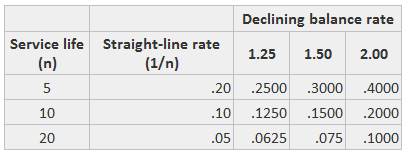What Is Account Reconciliation?

The documentation review process compares the amount of each transaction with the amount shown as incoming or outgoing in the corresponding account. For example, suppose a responsible individual retains all of their credit card receipts but notices several new charges on the credit card bill that they do not recognize. Perhaps the charges are small, and the person overlooks them thinking that they are lunch expenses. To learn more about how Clio can help law firms to easily manage trust accounting and three-way reconciliation, while staying compliant, read our guide here. Failure to adhere to compliance requirements that apply to account reconciliation can potentially lead to negative legal and professional consequences, including regulatory penalties, civil liability, and even disbarment.
Identify the right solution/vendor
Account reconciliation is the process of cross-checking a company’s account balance with external data sources, such how to account for advance payments: 9 steps with pictures as bank statements. Reconciliation in accounting is the process of comparing multiple sets of financial records (such as the balances and transactions recorded in bank statements and internal records) to ensure their correctness and agreement. A three-way reconciliation is a specific accounting process used by law firms to check that the firm’s internal trust ledgers line up with individual client trust ledgers and trust bank statements.
If there are receipts recorded in the internal register and missing in the bank statement, add the transactions to the bank statement. Consequently, any transactions recorded in the bank statement and missing in the cash register should be added to the register. Conversely, identify any charges appearing in the bank statement but that have not been captured in the internal cash register.
- Companies use this process to prevent fraud, ensure their records are consistent, and stay compliant.
- As a business, the practice can also help you manage your cash flow and spot any inefficiencies.
- Reconciliation in accounting is not only important for businesses, but may also be convenient for households and individuals.
- And while most financial institutions do not hold you responsible for fraudulent activity on your account, you may never know about that fraudulent activity if you don’t reconcile those accounts.
- This type of reconciliation helps businesses maintain accurate financial records and identify any discrepancies, so they always know who owes them money and who they need to pay.
Reconciling Account
The account conversion method is where business records such as receipts or canceled checks are simply compared with the entries in the general ledger. Reconciliation is an accounting procedure that compares two sets of records to check that the figures are correct and in agreement and confirms that accounts in a general ledger are consistent and complete. Remember, maintaining accurate financial records is a significant factor that keeps the wheels of your business turning smoothly. In the world of accounting, reconciliation is not just a term; it is an essential tool for ensuring accuracy, maintaining financial health, and fostering trust.
For lawyers, account reconciliation is particularly important when it comes to trust accounts. For example, you may need to reconcile your trust account bank statement with client balances at a specific frequency, such as monthly or quarterly. The accounting team in an organization is responsible for reconciling accounts at the end of each financial period to ensure that the GL balance is complete and accurate. In order to perform reconciliations accurately, accountants need to have all the relevant documents including bank statements and vendor information.
How Often Should a Business Reconcile Its Accounts?
Some of the transactions affected may include ATM service charges, check printing fees. The analytics review method reconciles the accounts using estimates of historical account activity level. It involves estimating the actual amount that should be in the account based on the previous account activity levels or other metrics. The process is used to find out if the discrepancy is due to a balance sheet error or theft. The bank discovered that the mysterious transaction was a bank error, and therefore, reimbursed the company for the incorrect deductions. Rectifying the bank errors bring the bank statement balance and the cash book balance into an agreement.
By leveraging our Account Reconciliation Software, you can utilize out-of-the-box AI transaction matching rules to automate the reconciliation process and achieve almost 95% journal posting automation. In the event that something doesn’t match, you should follow a couple of different steps. First, there are some obvious reasons why there might be discrepancies in your account. If you’ve written a check to a vendor and reduced your account balance in your internal systems accordingly, your bank might show a higher balance until the check hits your account. Similarly, if you were expecting an electronic payment in one month, but it didn’t actually clear until a day before or after the a beginner’s guide to the accounting cycle end of the month, this could cause a discrepancy.

Consequences of Not Reconciling Your Bank Statement
Once the errors have been identified, the bank should be notified to correct the error on their end and generate an adjusted bank statement. Automating your account reconciliation process doesn’t mean that you can dismiss your accounting team overnight or improve efficiencies twofold immediately. Setting realistic expectations for AI implementation is key to understanding your ROI on AI spending. A business that processes a few transactions a month may be able to reconcile its accounts monthly, while a larger business with hundreds of transactions daily may need to reconcile its accounts more frequently.
For example, Company XYZ is an investment fund that acquires at least three to five start-up companies each year. For the current year, the company estimates that annual revenue will be $100 million, based on its historical account activity. The company’s current revenue is $9 million, which is way too low compared to when and why are consolidated financial statements necessary the company’s projection. The following questions can help you assess whether your organization is ready to implement AI for its account reconciliation and other processes. Below, you will find a four step guide to choosing the right vendor for your account reconciliation automation that offers maximum return on investment (ROI), efficiency, and savings.
